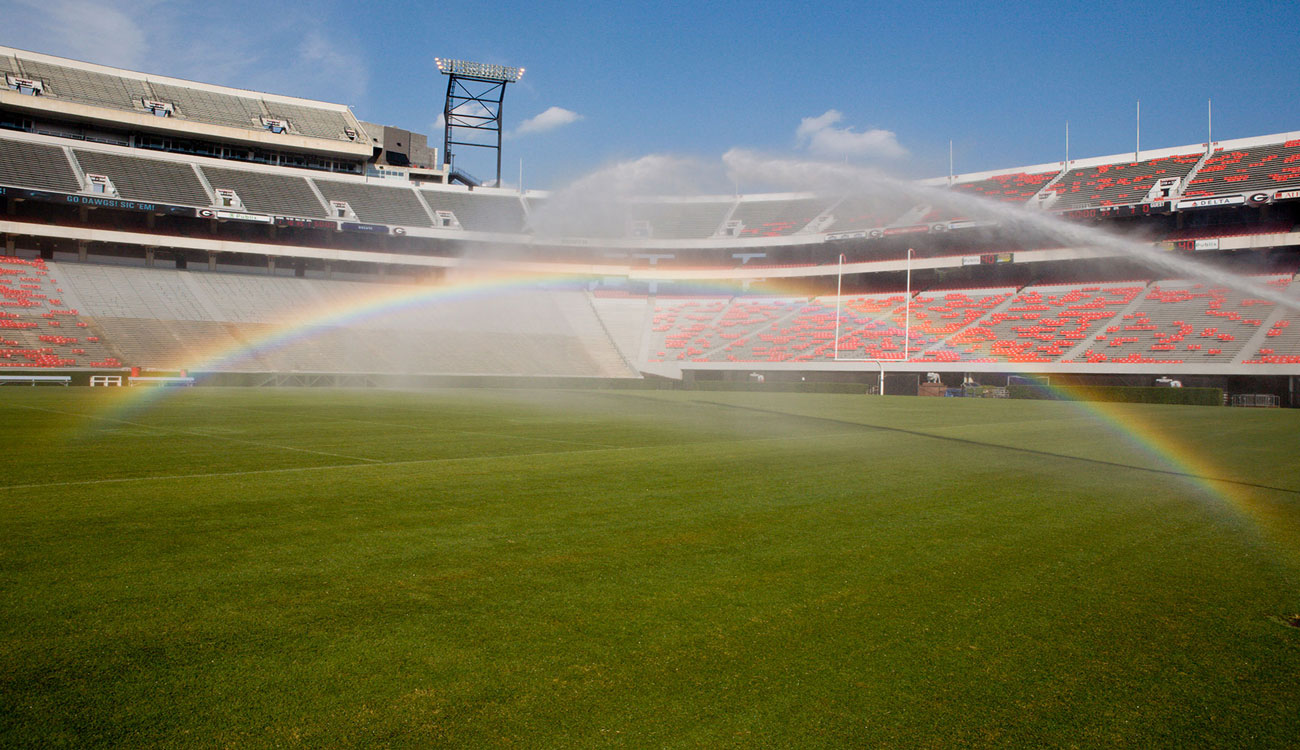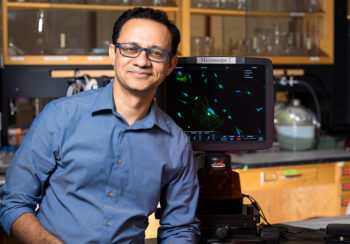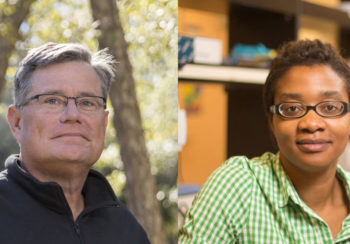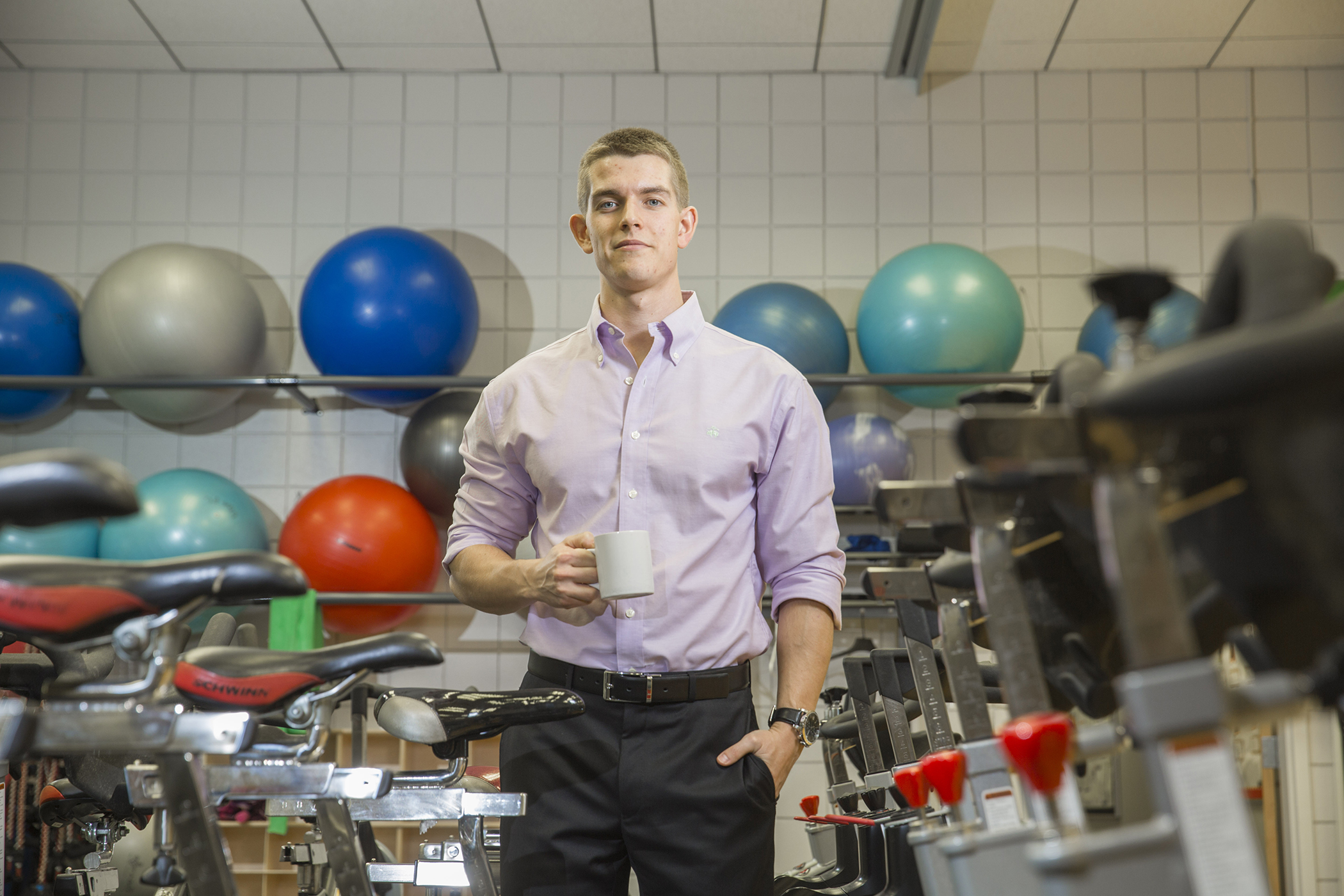As more sports stadiums turn to artificial turf, questions over the safety of the plastic-leaved fields linger.
But one thing’s for sure: The University of Georgia’s Sanford Stadium isn’t going fake any time soon.
Vince Dooley Field is surfaced with Tifway 419 hybrid bermudagrass, a UGA-developed turfgrass known for its durability, aggressive growth habit, and wear and traffic tolerance. Turfgrass—a term that encompasses all the varieties of grass people see and deal with on a daily basis, from bermudagrass to centipedegrass—is an area where UGA has excelled in both research and development of new cultivars for more than 50 years.
Gerald Henry, UGA Athletics Association Endowed Professor of Environmental Turfgrass Science in the College of Agricultural and Environmental Sciences, can easily rattle off a list of what makes real grass better than the fake stuff. “Synthetic fields may stay green year round, but injury incidence is often higher, temperatures may reach dangerous levels, and costs far exceed those of natural grass.” Henry joined UGA’s faculty in 2012, bringing his expertise in turfgrass performance testing, something only two other universities in the U.S. can claim to do. “Environmental benefits of turfgrass systems are typically associated with the presence of fibrous roots. Extensive root architecture helps hold soil in place under heavy rainfall and doubles as a filtration device for water as it moves through the soil. By the time water eventually reaches underground reservoirs, it’s a lot cleaner.”
In addition to its environmental benefits, turf has a natural buoyance to it, something that’s especially beneficial when soccer or football players slam into the ground during a play.
“When you’re in a car accident, do you want to hit something that gradually gives way while slowing you down or do you want to hit a brick wall? That’s the type of difference we’re talking about.”
– Gerald Henry, UGA Athletics Association Board Endowed Professor of Environmental Turfgrass Science
“When you’re in a car accident, do you want to hit something that gradually gives way while slowing you down or do you want to hit a brick wall? That’s the type of difference we’re talking about,” Henry said.
Of course, turfgrass is alive. So, maintaining a consistent, immaculate field does come with its challenges.
Just like a person’s home lawn, turfgrass used for recreational purposes and the soil beneath it is far from uniform. Different areas have diverse water requirements, aerification demands and pesticide needs. Henry’s research has shown that 85% of ground-derived player injuries occur in transitional spots, where wetter soil meets drier or compact soil intersects with looser. Using sensor technology, he creates maps that can be used to adjust management practices that help increase field performance and protect athletes from potential career-ending injuries. This technology came in handy when Sanford Stadium’s field manager needed help assessing the accuracy of the irrigation system. Henry found the system was incredibly inaccurate, and the installation of a new system has led to a million gallons of water being saved each year.
But it’s not just collegiate football fields that are benefitting from Henry’s work. He also partners with local community sports field managers and industry groups to show them how they can better use the resources they have and how they can determine which areas of their fields or lawns need the most help. While collegiate and professional sports fields and putting greens have the money to invest in technology and hire help to make water and pesticide use more efficient, private homeowners often don’t have the money or know-how to properly apply pesticides or irrigate their landscapes. That’s where outreach through UGA Extension comes into play, putting research into practice. You can find recommended mowing heights, fertilizer amounts and more at GeorgiaTurf.
“I hate doing research for the sake of research,” Henry said. “We want to conduct research that solves real world problems and get those solutions into the hands of the public.”
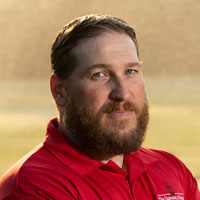
About the Researcher
Gerald Henry
UGA Athletics Association Board Endowed Professor of Environmental Turfgrass Science
College of Agricultural & Environmental Sciences



